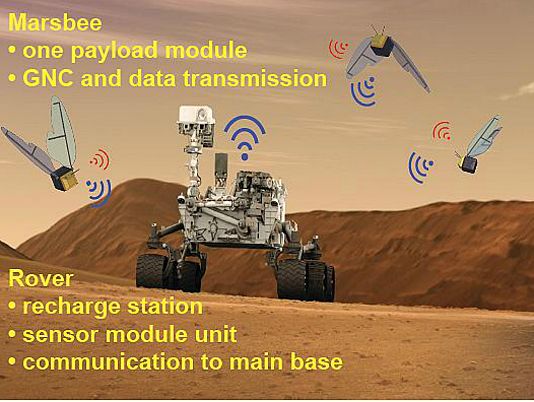Scientists say Marsbees will be the size of bumblebees but with cicada-sized wings.
NASA is supporting the development of a swarm of robotic bees designed to fly across the surface of Mars and explore all of its nooks and crannies.
The cyber-insects, known as Marsbees, will be the size of bumblebees but have large cicada-sized wings, allowing them to hover in the Martian atmosphere, which is around 100 times thinner than the Earth’s.
Developed by US and Japanese scientists, the robot insects will be integrated with sensors and wireless communication devices allowing them to map the terrain and scan for signs of life.
They will also collect samples from the Red Planet, and use a Mars rover as a charging point.
“The swarm of Marsbees can significantly enhance the Mars exploration mission,” said Dr Chang-kwon Kang, of the University of Alabama.
A team in Japan are now developing and testing the “micro flapping robots” while Kang and his team in the US model, analyse and optimise them for conditions on Mars.
The project is one of 25 early stage innovations selected by NASA for funding under its Innovative Advanced Concepts (NIAC) scheme.
All receive around $125,000 (€101,000) to fund research for nine months and can then apply for Phase II funding.
“The NIAC program gives NASA the opportunity to explore visionary ideas that could transform future NASA missions by creating radically better or entirely new concepts while engaging America’s innovators and entrepreneurs as partners in the journey,” said Jim Reuter, acting associate administrator of NASA’s Space Technology Mission Directorate.
“The concepts can then be evaluated for potential inclusion into our early stage technology portfolio.”
Other ideas receiving NASA funding include a “flying amphibious robot” and a steam-powered jumping robot named Sparrow.












